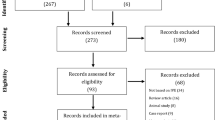Abstract
Microsurgical denervation of the spermatic cord (MDSC) can provide up to an 86% improvement in pain in patients with chronic orchialgia (CO) who have failed conservative management. Failures in MDSC could be due to small diameter nerves (≤1 mm) left behind on the spermatic cord. The objective of this study was to assess if hydrodissection (HD) of the spermatic cord after MDSC could decrease the number of residual nerve fibers without compromising blood flow. Prospective blinded randomized control trial: bilateral MDSC was performed on 22 adult rats (44 cords). HD of the spermatic cord was performed on one side of each rat (side randomized) using the ERBEJET2. The contralateral cord (no HD) was the control for each animal. Blood flow through the vessels was monitored using a micro-Doppler probe. After completion a cross-section of the residual cord was sent to pathology (blinded to technique) to assess for small diameter nerves and signs of damage in vascular integrity. Blood flow had been maintained in the vessels when the ERBEJET2 was set to 6 bar (87 psi). The cord where HD had been performed had a significantly lower total median residual nerve count of 5 (0–10), compared to 8 (2–12) on the non-HD side (p = 0.007). No structural damage was seen in the vessels in the spermatic cord that had undergone HD (gross exam and histology). HD of the spermatic cord significantly decreases residual nerve density without compromising vascular integrity in a rat model.
This is a preview of subscription content, access via your institution
Access options
Subscribe to this journal
Receive 8 print issues and online access
$259.00 per year
only $32.38 per issue
Buy this article
- Purchase on Springer Link
- Instant access to full article PDF
Prices may be subject to local taxes which are calculated during checkout



Similar content being viewed by others
References
Costabile RA, Hahn M, McLeod DG. Chronic orchialgia in the pain prone patient: the clinical perspective. J Urol. 1991;146:1571–4.
Davis BE, Noble MJ, Weigel JW, Foret JD, Mebust WK. Analysis and management of chronic testicular pain. J Urol. 1990;143:936–9.
Sibert L, Safsaf A, Rigaud J, Delavierre D, Labat JJ. Retentissement sur la sexualite et la fertilite des douleurs pelviperineales chroniques [Impact of chronic pelvic pain on sexual functions and fertility]. Prog Urol. 2010;20:917–21.
Strom KH, Levine LA. Microsurgical denervation of the spermatic cord for chronic orchialgia: long-term results from a single center. J Urol. 2008;180:949–53.
Parekattil SJ, Gudeloglu A, Brahmbhatt JV, Priola KB, Vieweg J, Allan RW. Trifecta nerve complex—potential anatomic basis for microsurgical denervation of the spermatic cord for chronic orchialgia. J Urol. 2013;190:265–70.
Levine L. Chronic orchialgia: evaluation and discussion of treatment options. Ther. Adv Urol. 2010;2:209–14.
Parekattil SJ, Cohen MS. Robotic surgery in male infertility and chronic orchialgia. Curr Opin Urol. 2010;20:75–9.
Ramasamy R, Sterling J, Li PS, Robinson BD, Parekattil S, Chen J, et al. Multiphoton imaging and laser ablation of rodent spermatic cord nerves: potential treatment for patients with chronic orchialgia. J Urol. 2012;187:733–8.
Menovsky T, De Ridder D. Hydrodissection versus high-pressure water jet dissection. Microsurgery.2007;27:354.
Ting J, Rozen WM, Morsi A. Subfascial variants of the deep inferior epigastric artery and its perforators: use the hydrodissection technique. Microsurgery.2010;30:249–50.
Kumar S, Nair RU. Left anterior descending artery endarterectomy by hydrodissection. Heart Lung Circ. 2009;18:289–92.
Guru KA, Perlmutter AE, Butt ZM, Peabody JO. Hydrodissection for preservation of neurovascular bundle during robot-assisted radical prostatectomy. Can J Urol. 2008;15:4000–3.
Aljumaily A, Al-Khazraji HAJ, Gordon A, Lau S, Jarvi KA. Chronic scrotal pain may lead to reduced sexual function and interest, while sexual activity may worsen chronic scrotal pain: “double jeopardy”. Transl Androl Urol. 2018;7 Suppl 1:S23–8.
Alkan I, Yuksel M, Ozveri H, Atalay A, Canat HL, Culha MG, et al. Semen reactive oxygen species levels are correlated with erectile function among chronic prostatitis/chronic pelvic pain syndrome patients. Int J Impot Res. 2018;30:335–41.
Kumar P, Mehta V, Nargund VH. Clinical management of chronic testicular pain. Urol Int. 2010;84:125–31.
Papachristou DN, Barters R. Resection of the liver with a water jet. Br J Surg. 1982;69:93–4.
Toth S, Vajda J, Pasztor E, Toth Z. Separation of the tumor and brain surface by “water jet” in cases of meningiomas. J Neurooncol. 1987;5:117–24.
Corvin S, Sturm W, Schlatter E, Anastasiadis A, Kuczyk M, Stenzl A. Laparoscopic retroperitoneal lymph-node dissection with the waterjet is technically feasible and safe in testis-cancer patient. J Endourol. 2005;19:823–6.
Moinzadeh A, Hasan W, Spaliviero M, Finelli A, Kilciler M, Magi-Galluzzi C, et al. Water jet assisted laparoscopic partial nephrectomy without hilar clamping in the calf model. J Urol. 2005;174:317–21.
Patel MI, Spernat D, Lopez-Corona E. Hydrodissection of neurovascular bundles during open radical prostatectomy improves postoperative potency. J Urol. 2011;186:233–7.
Kaduk WM, Stengel B, Pohl A, Nizze H, Gundlach KK. Hydro-jet cutting: a method for selective surgical dissection of nerve tissue. An experimental study on the sciatic nerve of rats. J Craniomaxillofac Surg. 1999;27:327–30.
Oertel J, Gaab MR, Knapp A, Essig H, Warzok R, Piek J. Water jet dissection in neurosurgery: experimental results in the porcine cadaveric brain. Neurosurgery. 2003;52:153–9.
Tschan C, Gaab MR, Krauss JK, Oertel J. Waterjet dissection of the vestibulocochlear nerve: an experimental study. J Neurosurg. 2009;110:656–61.
Funding
Funding for the animals and instrumentation was provided by ERBE, Inc. All authors have no disclosures.
Author information
Authors and Affiliations
Corresponding author
Ethics declarations
Conflict of interest
The authors declare that they have no conflict of interest.
Additional information
Publisher’s note Springer Nature remains neutral with regard to jurisdictional claims in published maps and institutional affiliations.
Rights and permissions
About this article
Cite this article
Gudeloglu, A., Brahmbhatt, J.V., Allan, R. et al. Hydrodissection for improved microsurgical denervation of the spermatic cord: prospective blinded randomized control trial in a rat model. Int J Impot Res 33, 118–121 (2021). https://doi.org/10.1038/s41443-020-00351-1
Received:
Revised:
Accepted:
Published:
Issue Date:
DOI: https://doi.org/10.1038/s41443-020-00351-1



